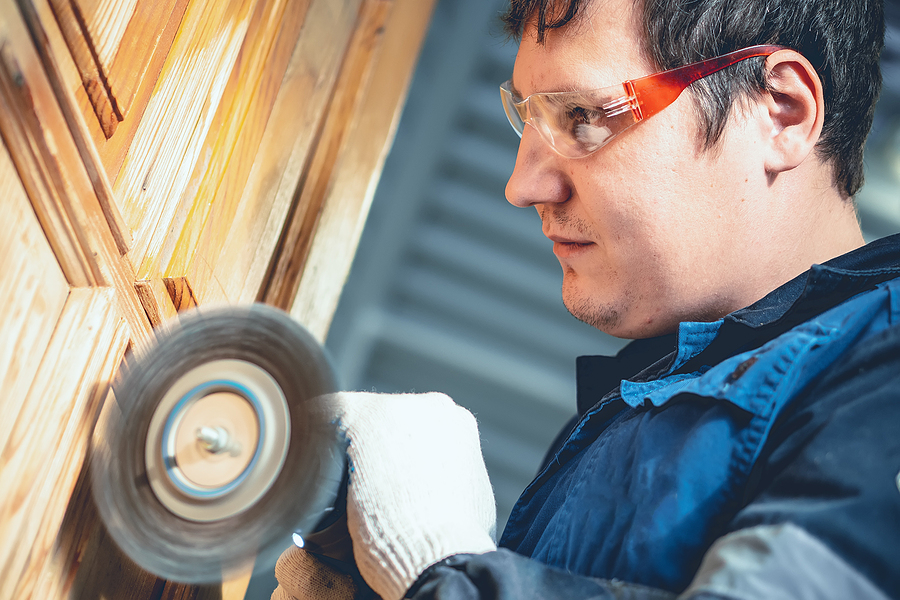Posted by Sandpaper America on Apr 28th 2023
Learn the Basics of Sanding Techniques for Furniture Projects
Are you tackling a furniture project and want to make sure it has that professional finish? Sanding is an important part of any woodworking or DIY project, and it takes practice to get good results. Here we’ll cover the basics of sanding techniques so you can achieve a smooth result on your next furniture project. Continue reading to get started!

The Joys of Furniture Restoration
Furniture restoration can be an incredibly satisfying and fulfilling endeavor. Whether you're giving new life to a cherished family heirloom or transforming a roadside find into a statement piece, the sense of accomplishment that comes with restoring furniture is second to none. Not only does it allow you to flex your creative muscles, but it also contributes to sustainability by reducing waste and preserving history. Restoring furniture can be a great way to bring new energy to your home decor and treasure items that may have otherwise been tossed aside. For those who love DIY projects or simply enjoy a good challenge, furniture restoration is a wonderful hobby to explore.
Recommended Tools for Furniture Sanding
When it comes to sanding furniture, having the right tools can make all the difference. A high-quality sanding block, for example, helps to ensure that the sandpaper makes consistent and smooth contact with the surface of the wood. A hand sander or orbital sander can be effective for larger areas, while a detail sander can help get in the nooks and crannies. It's also important to have a variety of grits of sandpaper on hand, from coarse to fine, to properly prep and finish the surface. With the proper tools and techniques, your furniture sanding projects can result in a smooth and professional-looking finish.
Proper Techniques for Sanding Down Furniture
Sandpaper comes in various grits, with lower numbers indicating coarser paper suitable for removing material quickly and higher numbers are finer papers used for polishing wood surfaces. The type of sandpaper you use will depend on what kind of surface finish you’re looking for - from rough finishes where the grain still shows through to super-smooth finishes.
Here are some tips and techniques for each step in the furniture sanding process so that your finished product looks amazing:
> Use a Course Sandpaper and Orbital Sander
Start with a coarse sandpaper to remove any existing finish and smooth the wood. Make sure to use an orbital sander for even results. This will prepare your surface for stain or paint and make it easier to apply evenly. Move up in grits until you get the desired look, using finer papers as you go along. Remember not to press too hard when sanding, as this can create dents or blemishes in the wood’s surface.
> Switch to Steel Wool for a Glossy Polish
Once you have achieved a smooth finish, switch to steel wool and move the sander in circles over the entire surface - this gives a nice sheen to your furniture piece. If you want an even more polished effect, use wet-and-dry sandpaper in the higher grits and finish with a soft cloth. This will give a glossy shine to the wood that looks professional and beautiful.
Conclusion
Sanding out your furniture is important for achieving a good looking result but if done incorrectly it can ruin your project. Take the time to practice these sanding techniques and you’ll be sure to get excellent results on all of your furniture projects!
Do you need to stock up on some new furniture restoration and building materials? Contact Sandpaper America at 1-800-860-7263 (SAND) to buy high-quality, competitively priced sandpaper products for furniture woodworking and carpentry work. We manufacture our abrasives in-house, so you can be sure that your products are high quality. We offer custom orders, bulk orders, reoccurring orders, invoicing, and much more!
Related Posts:
How
to Sand Down an Old Rocking Chair
Best
Options For Removing Varnish and Paint From Wood
Why
You Should Not Paint Over These 4 Cabinet Surfaces

